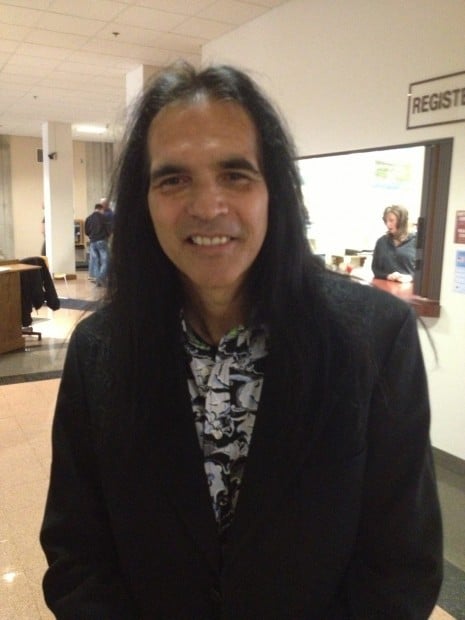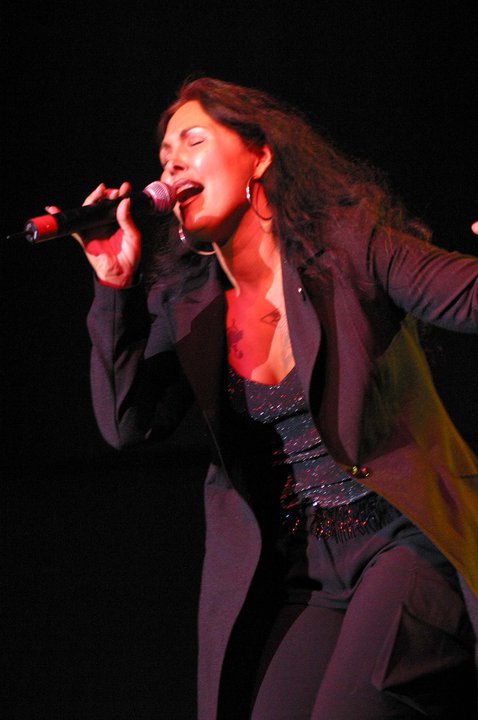 |
| Mary Youngblood |
 |
| Brule, Paul Laroche |
 |
| Star Nayea |
 |
| Eric Schweig |
 |
| Paul DeMain |
 | ||
| Chris Eyre |
 |
| Baby Veronica |
Famous Lost Birds/Adoptees
Star Nayea, raised in Detroit, Michigan,
has often been described as the “little lady with a big voice,” who launched
her career in Austin, Texas, then moved to New York City. In New York, several years ago, Star fully
developed her unique contemporary edge of bluesy rock with hints of folk and
traditional Native American vocals. Star, possibly Ojibwe-Potowatomi, adopted
by a white family as an infant, is seeking her own birth family. Star currently
lives with her son in Seattle.
Brulé, aka Paul LaRoche, has a unique story to tell.
Along with the amazing music, theatrics, and traditional dance troupe, Paul
tells the story of how he came to realize his Native American heritage after
nearly 38 years of separation from his biological family, who resides on the Lower
Brule Sioux Indian Reservation in central South Dakota. Paul, adopted at birth off the
reservation, discovered his Lakota heritage in 1993 after the death of both
adoptive parents. He was reunited on Thanksgiving Day 1993 with a brother,
sister, aunts, uncles, nieces and nephews. The discovery of his true heritage
has greatly affected Paul’s life and those around him.
Chris Eyre was born in 1969 on the Warm Spring
reservation in Oregon.
He grew up in Klamath Falls,
Oregon, adopted by
a non-Native family. “I’m Cheyenne
and Arapahoe. I went to school in Portland,
Oregon. I pursued an associate’s
degree in television, in directing; I earned my bachelor’s degree in media arts
at the University
of Arizona, and my
master’s at New York
University in filmmaking.”
Chris Eyre attempts to display portraits of contemporary Native Americans as
individuals who are plagued by problems common to all people, but who react
within the confines of their own particular circumstances. He founded Riverhead
Entertainment, a production company that for several years produced
commercials, films, and documentaries.
Paul DeMain is a member of the Oneida (Wisconsin) and Ojibwe tribes, and was raised
by a non-Native family in Wausau,
Wisconsin. “I grew up with some
compassionate liberals who never tried to hide my identity and encouraged me to
inquire about it,” DeMain says. In the early 1970s, he made contact with the Oneida tribe, where he is
enrolled. He has met his biological family. In 1986 he launched News from Indian Country, an independent
newspaper that covers tribal politics, legal issues in Native and US courts,
reservation crime, education and Indian art, with a circulation of 7,000
readers worldwide.
Eric Schweig was born to an Inuit mother and a
Chippewa-Dene father in Inuvik, the Northwest Territories.
At six months, he was adopted by a German-Canadian family. During his childhood
in Inuvik, Bermuda
and Toronto, he
was systematically and physically abused by his adoptive parents then he ran
away from home when he was 16, and became a laborer on construction sites. In
1987 he was “discovered” while walking down a Toronto street and cast in the movie The Shaman's Source. At least 16 films
followed, most notably as Uncas in The
Last of the Mohicans. During this time period he endured a “roller coaster
of alcohol, drugs, violence, failed relationships, despair and confusion”
[Schweig said] due to the abuse and racism and ethnic identity deprivation of
his childhood. In 1996 he began to regain his cultural identity and is now primarily
a carver, especially Inuit spirit masks, living on Vancouver
Island, and he continues to act in films. He is a passionate
opponent of the adoption of Aboriginal Native People by Europeans. Eric’s
Adoption Speech: http://www.mohicanpress.com/mo05005.html
Mary Youngblood, Chugach Aleut/Seminole, is a Grammy award
winning flutist, who was adopted and raised by a non-Native couple. Mary opened
her adoption at age 26.
We are actors, musicians, directors, athletes, comedians and so much more






















No comments:
Post a Comment
Please: Share your reaction, your thoughts, and your opinions. Be passionate, be unapologetic. Offensive remarks will not be published. We are getting more and more spam. Comments will be monitored.
Use the comment form at the bottom of this website which is private and sent direct to Trace.